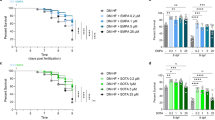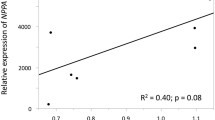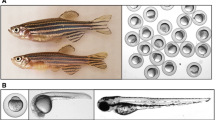Abstract
The sodium–glucose cotransporter 2 (SGLT2) inhibitor empagliflozin was recently reported to reduce heart failure-associated hospitalizations and cardiovascular mortality amongst individuals with type 2 diabetes at high cardiovascular risk. We sought to elucidate the underlying mechanism(s) for these protective effects using a validated zebrafish heart failure model to evaluate the impact of empagliflozin on the expression of biomarkers of heart failure and mortality. We used aristolochic acid (AA) to induce heart failure in developing cmlc2::GFP transgenic zebrafish embryos and monitored BNP signaling in nppb::Luc transgenic zebrafish with a luciferase reporter assay. Empagliflozin markedly reduced the morphological and functional cardiac changes induced by AA; dampened AA-enhanced expression of brain natriuretic peptide and atrial natriuretic peptide; and reduced embryonic mortality. Furthermore, morpholino-mediated knockdown of the slc5A2 gene mimicked the changes evoked by empagliflozin in developing zebrafish embryos previously exposed to AA. We report herein the first mechanistic data demonstrating a salutary benefit of SGLT2 inhibition on critical pathways of heart failure signaling. These findings provide important translational clues to the cardiovascular benefits documented in the EMPA-REG OUTCOME study.


Similar content being viewed by others
Abbreviations
- AA:
-
Aristolochic acid
- ANP:
-
Atrial natriuretic peptide
- BNP:
-
Brain natriuretic peptide
- cox-2:
-
Cyclooxygenase-2
- dpf:
-
Days post fertilization
- EMPA:
-
Empagliflozin
- GATA4:
-
GATA Binding Protein 4
- GFP:
-
Green fluorescence protein
- Hpf:
-
Hours post fertilization
- IL-1β:
-
Interleukin-1β
- MEF2:
-
Myocyte enhancer factor-2
- MO:
-
Morpholino
- RT-qPCR:
-
Quantitative reverse transcription polymerase chain reaction
- SGLT2:
-
Sodium–glucose cotransporter 2
References
Zinman B, Wanner C, Lachin JM, Fitchett D, Bluhmki E, Hantel S, Mattheus M, Devins T, Johansen OE, Woerle HJ, Broedl UC, Inzucchi SE and Investigators E-RO (2015) Empagliflozin, cardiovascular outcomes, and mortality in type 2 diabetes. N Engl J Med 373:2117–2128. doi:10.1056/NEJMoa1504720
Abdul-Ghani M, Del Prato S, Chilton R, DeFronzo RA (2016) SGLT2 inhibitors and cardiovascular risk: lessons learned from the EMPA-REG OUTCOME Study. Diabetes Care 39:717–725. doi:10.2337/dc16-0041
Ferrannini E, Mark M, Mayoux E (2016) CV protection in the EMPA-REG OUTCOME Trial: a “thrifty substrate” hypothesis. Diabetes Care 39:1108–1114. doi:10.2337/dc16-0330
Sattar N, McLaren J, Kristensen SL, Preiss D, McMurray JJ (2016) SGLT2 Inhibition and cardiovascular events: why did EMPA-REG Outcomes surprise and what were the likely mechanisms? Diabetologia 59:1333–1339. doi:10.1007/s00125-016-3956-x
Huang CC, Monte A, Cook JM, Kabir MS, Peterson KP (2013) Zebrafish heart failure models for the evaluation of chemical probes and drugs. Assay Drug Dev Technol 11:561–572. doi:10.1089/adt.2013.548
Becker JR, Robinson TY, Sachidanandan C, Kelly AE, Coy S, Peterson RT, MacRae CA (2012) In vivo natriuretic peptide reporter assay identifies chemical modifiers of hypertrophic cardiomyopathy signalling. Cardiovasc Res 93:463–470. doi:10.1093/cvr/cvr350
Lopaschuk GD, Verma S (2016) Empagliflozin’s fuel hypothesis: not so soon. Cell Metab 24:200–202. doi:10.1016/j.cmet.2016.07.018
Verma S, Garg A, Yan AT, Gupta AK, Al-Omran M, Sabongui A, Teoh H, Mazer CD, Connelly KA (2016) Effect of empagliflozin on left ventricular mass and diastolic function in individuals with diabetes: an important clue to the EMPA-REG OUTCOME trial? Diabetes Care. doi:10.2337/dc16-1312
Acknowledgements
This work was supported by grants from the Heart & Stroke Foundation of Canada to S. Verma, Natural Sciences and Engineering Research Council of Canada (NSERC) to XYW, Brain Canada Foundation/Health Canada to X-Y. Wen and Canada Foundation for Innovation (CFI) to X-Y. Wen and S. Verma. S. Verma is the Canada Research Chair in Atherosclerosis at the University of Toronto. X. Shi is a visiting scientist at St. Michael’s Hospital and the University of Toronto and is sponsored by the China Scholarship Council (CSC).
Authors’ contributions
SV and X-YW designed the studies. XS and X-YW designed the experiments. XS, JY, KB-A, KKS, XL and AQ conducted the experiments. XS, SV, KKS, AG and X-YW interpreted the data. XS and X-YW drafted the manuscript. SV and AQ critically edited the manuscript. All authors read and approved the final manuscript.
Author information
Authors and Affiliations
Corresponding authors
Ethics declarations
Conflict of interest
The authors declare that they have no competing interests.
Rights and permissions
About this article
Cite this article
Shi, X., Verma, S., Yun, J. et al. Effect of empagliflozin on cardiac biomarkers in a zebrafish model of heart failure: clues to the EMPA-REG OUTCOME trial?. Mol Cell Biochem 433, 97–102 (2017). https://doi.org/10.1007/s11010-017-3018-9
Received:
Accepted:
Published:
Issue Date:
DOI: https://doi.org/10.1007/s11010-017-3018-9




